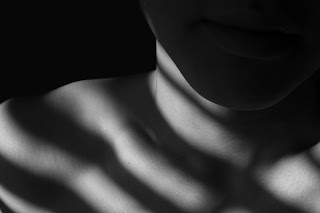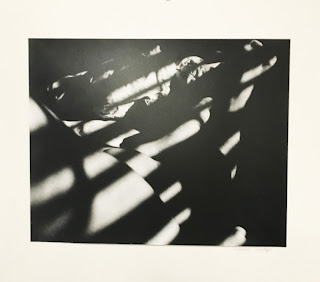Thursday, February 18, 2016
W. Eugene Smith and The Impact of Photographs to Promote Social Change
W. Eugene Smith was an American photographer. He was born on December 30, 1918. He began a job as a photographer at age 14 with two newspapers. After going to college, he began working for Life magazine to take pictures of World War II. Smith liked to shoot photographs that could potentially lead to an improvement in the world. He eventually went to work on his own and did many photo essays of suffering villages to raise awareness. Smith died on October 19, 1973.
This photograph was taken in Okinwa in 1945
Photo by: W. Eugene Smith
Website:http://spartacus-educational.com/USAPsmithE.htm
Much like Smith, I believe a photograph can have a large impact on society and help to promote social change. I think that people see certain photographs that make them passionate about what that photograph displays. I visited a National Geographic exhibit on vacation and saw these amazing photographs, but also watched a film about the photographers. It told about how they went to a war zone and were captured all while taking photos. They were all safe, but it made me realize how important photographs can be. Seeing photographs about topics like war or other social issues evoked many emotions in me. Taking photographs that make people feel sad or angry or even uncomfortable can lead to a memory. If people are shown photographs it puts an image in their head to add to the facts they hear. Remembering a photograph can help people think more about how they can fix the problem. Photographs of events like these help raise awareness as well.
This photograph was taken during the Vietnam war. I find this a very powerful image especially because you can see the emotion in the man's face. There are ruins around him and the conditions look terrible. I believe photographs like these can make people think more about what is happening and come up with ways to help.
Photo by: Hugh Van Es
Website: http://lens.blogs.nytimes.com/2013/09/12/vietnam-war-photos-that-made-a-difference/?_r=0
Tuesday, February 2, 2016
Project 5 Light, Shadow, and Reflection
Silhouette
Photo by: Freek Bekaert
Website: https://500px.com/photo/8758437/white-outline-by-freek-bekaert
Silhouette and Shadows
Photo by: Mecuro B. Cotto
Website: http://beautifulbizzzzarre.blogspot.com.au/2012/06/mecuro-b-cotto.html?zx=1351f01d32418ed8
Photo by: Unknown
Website: http://webneel.com/i/photography/8-woman-black-and-white-photography-by-kirk-cypel/07-2013/d?nid=8760
Shadows
Photo by: Susan Grant
Website: Critical Mass
Photo by: Lei Han
Website: https://www.flickr.com/photos/sunsetnoir/7730483398/
Reflection
Photo by: Unknown
Website: http://art.ekstrax.com/2015/08/the-art-of-black-and-white-photography.html
Photo by: Jobst D. Küker
Website: http://www.fotoblur.com/images/486340
Back Lit
Photo by: Josef Koudelka
Website: http://onlinebrowsing.blogspot.cz/2010/12/josef-koudelka-gypsies.html
Part 2
Photo by: Edward Steichen
Website: https://www.pinterest.com/pin/561261172287806548/
Website: https://www.pinterest.com/pin/561261172287806548/
This image is a back lit silhouette with shadows. I think the photographer took his meter reading around the lighter flower section of the photograph because there is a dark underexposed shadow, but there is detail in the flowers. I think the photographer is going for a mysterious, but also calming mood. The shadow makes it eerie with the light surrounding it, but the image is beautiful. I think if the photographer metered the opposite, there would not be an intense shadow and it would be properly exposed. I do not think there would be as much of a strong mood to the photograph.
Monday, February 1, 2016
Margaret Bourke-White
Margaret Bourke-White was a famous American photographer and journalist. She was born in New York in 1904. She went to Columbia University and transferred to the University of Michigan where she met her husband. She majored in biology however did a lot of photography throughout her years of schooling. In 1929 she was hired to be a photographer for the magazine Fortune. She traveled to Germany and Russia where she photographed the Soviet Union's plan for industrialization. She was the first woman and photographer to be permitted to photograph the Soviet Union. In 1934 her work on Dust Bowl farmers was published in Fortune, Vanity Fair and the New York Times. In 1936 she became a photographer for Life magazine. Margaret Bourke-White was the first woman photographer attached to the US military and she documented the horrors of World War II in Germany. She photographed Gandhi hours before he was assassinated and documented the Korean war in 1952. That same year she was diagnosed with Parkinson's disease and died in 1971.
Photo by: Margaret Bourke-White
Website: http://topyaps.com/top-10-photographs-of-margaret-bourke-white
This photograph is one of my favorites of Bourke-White's work. The light hits the subjects in a mysterious way as they are looking of into the distance. Also, the subject of the photo is very powerful because it shows two black figures in a cave working in very hot conditions shown by their sweat. The people do not appear to be happy showing this might be a result of racial discrimination or they are unable to find better work.
Subscribe to:
Comments (Atom)
















